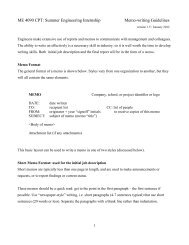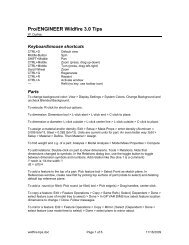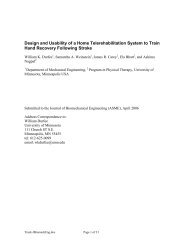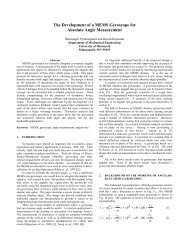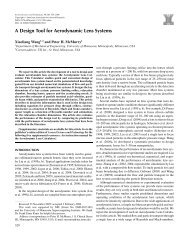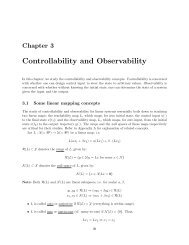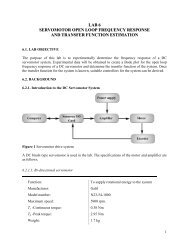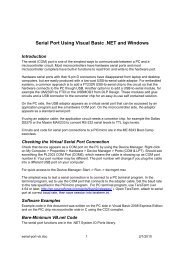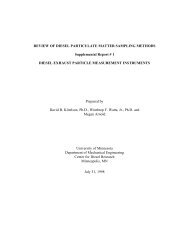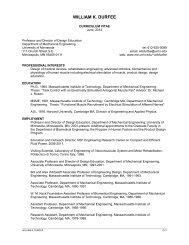Review of diesel particulate matter sampling - Department of ...
Review of diesel particulate matter sampling - Department of ...
Review of diesel particulate matter sampling - Department of ...
You also want an ePaper? Increase the reach of your titles
YUMPU automatically turns print PDFs into web optimized ePapers that Google loves.
Saturation Ratio<br />
3<br />
2.5<br />
2<br />
1.5<br />
1<br />
0.5<br />
0<br />
Influence <strong>of</strong> Exhaust Soot on Saturation Ratio<br />
Adiabatic Dilution, Equilibrium Adsorption<br />
High saturation ratios may lead to nucleation <strong>of</strong> new particles<br />
1 10 100 1000<br />
Dilution Ratio<br />
Low Soot High Soot<br />
Figure 8.- Saturation vs. dilution ratio for engines emitting different amounts<br />
<strong>of</strong> DPM.<br />
Residence Time<br />
The kinetics <strong>of</strong> adsorption become important when the exhaust is going through rapid changes<br />
in temperature or adsorbate concentration. For laboratory measurements, filters used to<br />
measure DPM are usually in the exhaust stream long enough that it is assumed that the SOF<br />
will reach equilibrium with the solids on the filter. For laboratory studies attempting to<br />
simulate on-highway dilution conditions using near real-time instruments, the rate at which<br />
adsorption and condensation occurs must be considered.<br />
It is expected that the tendency to produce nuclei during dilution will be maximized at an<br />
intermediate rate <strong>of</strong> dilution. Higher saturation ratios will be produced and nucleation will be<br />
more likely if dilution takes place on a time scale faster than characteristic times for<br />
adsorption. Under these circumstances, there is little time for adsorption to take place and the<br />
exhaust behaves as if there is a much smaller surface area available for adsorption. On the<br />
other hand, if the rate <strong>of</strong> dilution is too high, the exhaust will spend little time in the<br />
intermediate dilution ratio range where saturation ratios and nucleation rates are highest and<br />
nucleation will be minimized.<br />
Calculations were made for adsorption <strong>of</strong> a representative organic at dilution conditions that<br />
led to the highest saturation ratio. A typical SOF <strong>of</strong> 10% on DPM was assumed and an<br />
01/14/99 Page 22



